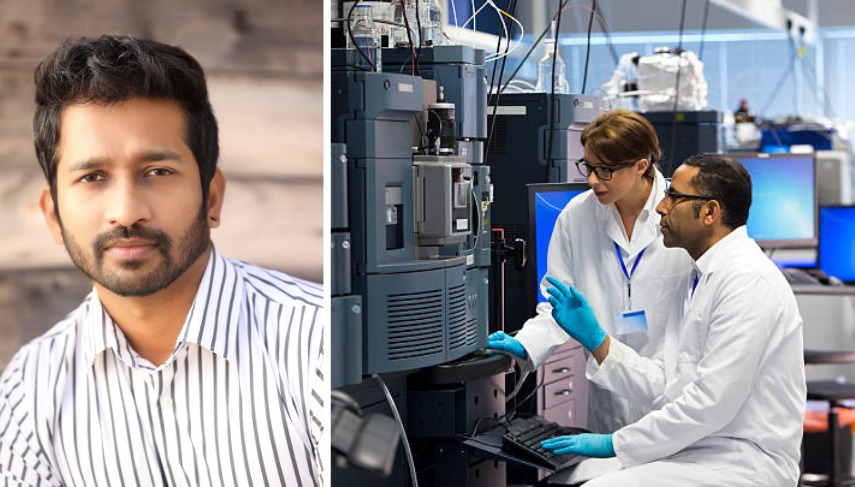In the last few years, technological progress has brought forward a new set of manufacturing techniques that allow for rapid prototyping (RP) to support the research and development (R&D) being conducted in the medical device industry. The RP techniques allow for prototyping using a wide range of materials with high precision in as quick as a few hours. While their incorporation into product development methodologies is widely spread, their application in bioengineering is continuously evolving.
Rapid prototyping assists with novel biodevices at each stage of the development process to address problems that may arise during device interaction with biological systems and help vet design decisions carefully. One of the prominent figures in this field is Karthik Bujuru, an expert R&D engineer for medical devices, whose groundbreaking work has had substantial impact on the industry.
Karthik Bujuru has come to hold a considerable footprint in the world of medical device development with nearly a decade’s worth of experience in designing and developing innovative solutions, with a particularly notable contribution to catheters, as we know them today. As a thought leader in the field, he has authored several papers in the domain of medical device development with international journals and institutions, that address the overarching issues faced by stakeholders in the sector, and serve to innovative and breakthrough technologies and strategy used for medical device development.
Some of his works include — “Multi-response Design optimization of Cardiovascular Catheters with Lasercut Hypotubes using Finite Element Analysis and Response Surface Methodology”; “Factors Impacting Leaflet Coaptation and Durability in Prosthetic Heart Valves” and “Fatigue Analysis of Novel Aortic Valve Stent Using Finite Element Analysis” published under the European Journal of Medical and Health Research (EJMHR).
While explaining the rapid prototyping technology, Karthik shared that this typical process involves idea conception, virtual construction of the idea using computer-aided design (CAD), generation of a physical prototype of the idea, and prototype evaluation for its form, fit, and function. Selection of prototyping manufacturing method has a direct impact on the quality of assessment necessary for design direction. The prototype device’s material/mechanical properties, and geometrical aspects such as shape, size, surface finish, tolerances, and proximity to the final product’s properties are crucial. While it’s important for the chosen prototypes’ manufacturing method to best represent the final product’s properties, it can lead to high costs and can substantially slow down the product R&D. Therefore, the rapid prototyping method while being cost-effective and time efficient, also needs to produce device properties as close as possible to the desired future product.
With his first-hand experience in the field, Karthik provided a deep insight into the several rapid prototyping techniques available at the disposal of medical device R&D engineers like 3D printing, CNC machining, using prototype molds for injection molding, laser machining etc. Using 3D printing, the users can generate physical parts in a matter of hours or days by directly uploading CAD designs into the printer. The 3D printer technology either uses a high-power laser to fuse the material powder to the desired shape (SLS printing) or uses a UV laser to cure photosensitive resin bed layer by layer into a desired object (SLA printing. Recent technological developments have brought numerous cost-effective and efficient 3D printing machines to the market, which made quick and easy prototyping possible and allowed for early detection of errors and speeding up the development process. 3D printing dimensional tolerances can be as low as 0.005 inches for complex shapes with undercuts that are otherwise not possible to manufacture in traditional injection molding.
However, even after providing such detailed information about these techniques, Karthik also highlighted a downside that cannot be ignored, some cons of 3D printing could be material brittleness, rough surface finish, shrinkage, biocompatibility, material degradation in certain media etc. To address this, R&D engineers choose to use rapid injection molding with prototype molds that have shorter lead times than traditional injection molding. The prototypes made through these prototype molds, although relatively costlier than 3D printing, can yield exceptional surface finish, and dimensional accuracy, and can be made using a wide range of material choices potentially also using the material of the final product. This also allows for conducting preliminary biocompatibility and sterilization feasibility studies on prototype devices that reasonably rely on the outcomes and their relevance to the final product test outcomes. In some cases, rapid manufacturing processes that involve material removal like high-speed numerical control machining are also used for conducting a portion or all of device prototyping if relatively longer development times are tolerated for greater accuracy and precision.
Considering all these factors, Karthik recommended that the prototype machining method for medical devices should consider the balance of several competing parameters such as cost, development lead time, material mismatch with a final device to mechanical properties, dimensional accuracy, precision, and biocompatibility. Excessive emphasis on shorter development lead times during rapid prototyping of medical devices could lead to faulty decision making which could eventually lead to high cost and delinquent R&D projects.




